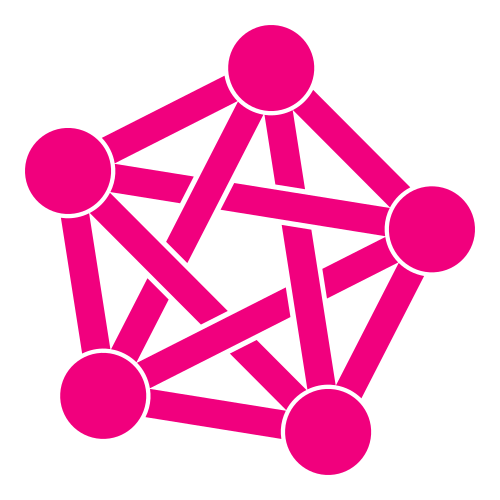cross-posted from: https://lemmy.ml/post/63110
cross-posted from: https://lemmy.ml/post/63109
cross-posted from: https://lemmy.ml/post/63108
We are all in love with decentralized social topology, aren’t we. But to make society reasonably decentralized, we need to remodel more than one level of it. I would like to bounce around some thoughts that may help establish a multilayer model of decentralized society.
::: Longwinded
- Assumptions.
1.1. I use communications as an example of social activity that is a key to all other processes.
1.2. I assume that a decentralized network of heterogeneous communities is a good model for human society that we need now, as the all-crisis unfolds and neither democracy nor (even less) capitalism can offer any constructive approach.
1.3. I assume that the minimal provisions for an individual must include the right to participate in more than one community at the same time, the right to opt-out peacefully at any moment and the right to form a community (and participate in the network) on an equal basis.
- Layers
2.1. “Fediverse”. What we now see as fediverse is an implementation of communications pattern, where instances of various services can be associated with specific communities and their local users considered community members. Federation protocol provides a routine way to regulate interactions with other communities.
2.2. “Community Intranet”. To control their collective memory, their policies/rituals and their boundaries, communities need to have control over the physical infrastructure of their “village intranet”. It applies mostly to “natural” (local) communities, while “virtual” ones may need a trusted and neutral virtual hosting environment. The control should not, however, influence individual participation in remote communities.
2.3. “NetCommons”. To keep the information flowing, society needs a non-owned, collectively managed transmission backbone. We can draw analogies with watershed management that is a known example of advantages and shortages of the commons approach.
2.4. “Platform Cooperatives”. Economic (and, effectively, political) control of the means of production is a key to stability of the ecosystem. Thus, decentralized ecosystem of user cooperatives provides cohesion to the whole multilayered model. Every user becomes a member of the co-op(s) operating their community(ies) infrastructure. Community co-ops then form the “NetCoooperative”, managing and maintaining the backbone systems and providing support, R&D and exception handling to communities in need.
- Essential question is, whether such a model is comprehensive and complete enough to provide scaffolding for an attempt to implement proof-of-concept project.
Questions and comments welcome.
:::
Wonderful! I love this thoughtful post, thank you @petros@lemmy.ml.
I will follow-up from the perpective of SocialHub, the grassroots community where we are collectively working to realize visions like these, and define the open standards on which we can build. Everyone is most welcome to join us in the quest, as we can really use all the help we can get 🤗
1. Assumptions
1.1. Communication, social activity
At SocialHub we adopted #SocialNetworkingReimagined as a rallying cry. What does that mean? It means simply: Supporting by tech that what exists in the real world. It is the social fabric that exists here that is relevant, and should inspire our tech designs. The goal should be adding value to humanity, our daily lives. The tech itself, however, provides merely an abstraction, an approximation of what we want to achieve. And we must beware what abstractions we build.
This insight is key, and it is what makes Fediverse very different than traditional social media. The latter were build as ‘tech to entertain us’, to lure us online, keep us there, and productize to maximize revenue streams (via Ads, we all know this) for shareholders. Nothing of the above is in it, and the word “social” is just a deception.
1.2. Decentralized, heterogenous communities
I fully agree, and personally feel that the concept of Community as it exists in the real world, is one of the most important things to model correctly in the interoperable fabric of the Fediverse. Community is everywhere! Community is also essential: at community-scale things work better. Remove community (which is not really possible in reality) and throw everything on a big heap, and stuff breaks down. Witness traditional social media platforms. One might simply say: Community works.
1.3. Participation, rights, equality
Exactly. The same provisions with regards to humanity and human rights that exist in the real world, apply online. Including the ongoing efforts and fight to improve those for each and every individual. Note that here is a true opportunity for tech to add value, as it can provide additional means (channels) for people to exercise their humanity and rights that do not exist offline. People who are oppressed / repressed, otherwise restricted in their freedoms.
2. Layers
2.1. Modeling (social) communication patterns
The protocols on which fedi is built - Linked Data, ActivityStreams, ActivityPub - lend themselves very well to model real-world systems (domains). Of course we are talking about highly complex systems of which reality is built. In that light the term “Pattern” is very appropriate. Patterns are abstractions that can be used in specific Contexts. There’s no one true model, it doesn’t exist. There are infinite variances. We can capture useful, context-specific models in Pattern Libraries, and by standardizing on them we can ensure interoperability in a Fediverse that ever grows.
On SocialHub I am promoting the concept of Domain Driven Design (DDD) as a means to find workable domain models and patterns. Also in Moving from silo-first to task-oriented federated app design I encourage people not to think in terms of Applications, but in what real-world process and domains they are bringing to the Fediverse, and to consider how they tie in with what already exists.
In terms of Community and DDD I am promoting the idea of “Community has no Boundary”, which is actually a fundamental paradigm as you also conclude above. Standardizing on a common abstraction for this concept therefore has applicabilty beyond fediverse.
Once we start thinking in domains, we have handholds to analyze them, break them down in constituent parts and build on top of them, like building blocks. For instance we might see that each community has a form of Governance, be it an informal group of friends, or a very complex structure like an urban/rural community (e.g. town or city), or a virtual one (e.g. the Fediverse itself). Governance then is another domain, that can stand on top of Community and be further broken down, have context-specific patterns defined.
2.2. “Community intranet”, infrastructure perspective
I consider this as (“just”) another domain to be analysed and elaborated as described above. And it is also a complex one. What parts of it are valuable to incorporate in the Fediverse itself, or stand on their own, either with help of automation or not? An example for brainstorm is Federated Moderation, but there are many others.
Right now things are still relatively ‘easy’, as our current Fediverse is for the most part a Microblogging medium. You spin up your own instance, determine blocklist/allowlist, configure some settings, and you are good to go. That changes as we tap into fedi’s potential and move towards the more task-oriented, multi-domain interoperability fabric. Then the simple model no longer scales.
2.3. “NetCommons”
I am all for exploring, and’d say: let’s bring it on, and I invite everyone to follow up on SocialHub forum and in this Lemmy brainstorming space. We need to start broad discussion on these topics, and find people willing to ideate and contribute to further elaboration.
Discussion only goes so far, and they must be followed-up with concrete projects. Part of our forum discussions is how to organize that efficiently. See also Organizing for SocialHub community empowerment.
2.4. Platform cooperatives
I had a very long (4hr) discussion with my friend Mat (@m3me), about this subject and all of the above. When it comes to cooperatives it is turtles all the way down as well. This is only logical, as cooperatives are communities too. What we think is needed is the binding fabric of all the good initiatives that are exist there in this world. A communication and collaboration medium that is the force to bring all of them together, make them visible (and discoverable in the first place). And benefiting from each other’s work, instead of reinventing wheels over and over again.
Am very happy to see more and more people explore the possibilities here, and encouraged about the growing strength of the (platform) cooperatives as a counterweight to hypercapitalism.
3. Viability
I’d say this entire idea is very comprehensive and ideally suited to scaffold minimal viable solutions from, which can be extended further as fediverse evolves.
But much of what we achieve hinges on the ways in which we manage to collaborate collectively. While the grassroots (you might also say anarchistic) nature of our decentralized approach works in our favour and is something to protect and foster, it is also working in ways that fragment our efforts and - by not reusing the work of others - makes it increasingly harder to achieve these goals.
I wrote the Analogy of Spiral Island the depict the way I see Fediverse evolution work best: all of collecting plastic bottles, turning trash into treasure, to build our floating base. The foundation on which we stand. When doing all this together, balancing the load, we can build archipelago’s that can withstand the rough seas of Bad Tech, and growing hurricanes of hypercapitalism.
With enough land area thus created, we’ll change the climate 🤗
I am also on SocialHub, slowly exploring discussions there.
While I am an infrastructure freak and part-time technologist, I also feel that we need to acknowledge “the geek problem”, as stated by Hamish Campbell. Not being a Marxist, I see strong potential in dialectical tension between social and technological visionaries and “design thinkers”, prioritizing already identified and expressed needs. This tension can move us ahead without struggling for unified and “one for all” answers.
I have just translated a piece by John Holloway, originally published here. I believe there is a fragment there that may help to develop a meta-narration for our joint efforts:
…a politics of questions is very different from a politics of answers. If we have the answers, it is our duty to explain them to others. That is what the state does, that is what vanguardist parties do. If we have questions but no answers, then we must discuss them together to try and find ways forward. “Preguntando caminamos,” as the Zapatistas say: “Asking we walk.”
I entirely agree with that notion. It is the reason why I started Fediverse Futures because SocialHub had too much a dogmatic tech focus imho. Only if people from all across the fediverse are prepared to get involved, and are able to make their voices heard, can we build the things that are worthwhile to pursue.
Both in finding the right questions (using imagination and collective ‘brainpower’) and formulating the proper answers we have much work to do, and explaining both to ourselves and others is key in that effort, I feel.

